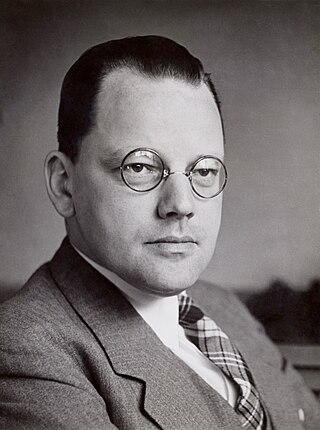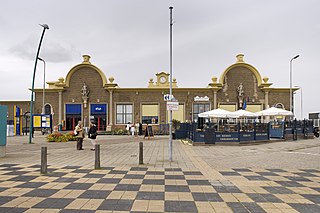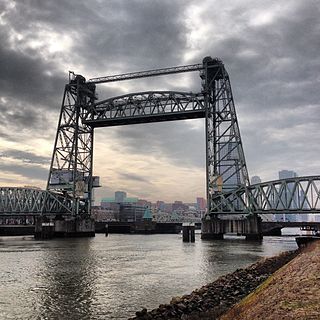
Georg Henri Anton "Joris" Ivens was a Dutch documentary filmmaker. Among the notable films he directed or co-directed are A Tale of the Wind, The Spanish Earth, Rain, ...A Valparaiso, Misère au Borinage (Borinage), 17th Parallel: Vietnam in War, The Seine Meets Paris, Far from Vietnam, Pour le Mistral and How Yukong Moved the Mountains.

Rotterdam is the second-largest city in the Netherlands after the national capital of Amsterdam. It is in the province of South Holland, part of the North Sea mouth of the Rhine–Meuse–Scheldt delta, via the "New Meuse" inland shipping channel, dug to connect to the Meuse at first and now to the Rhine.

Cinema of the Netherlands refers to the film industry based in the Netherlands. Because the Dutch film industry is relatively small, and there is little or no international market for Dutch films, almost all films rely on state funding. This funding can be achieved through several sources, for instance through the Netherlands Film Fund or the public broadcast networks. In recent years the Dutch Government has established several tax shelters for private investments in Dutch films.

Menno ter Braak was a Dutch modernist writer, critic, essayist, and journalist.

Pieter Lodewijk (Piet) Kramer was a Dutch architect, one of the most important architects of the Amsterdam School.

Vlissingen is a terminus railway station in Vlissingen, Netherlands. The station opened on 1 September 1873. The station is at the western end of the Roosendaal–Vlissingen railway and has 3 platforms. This station is less than 100 metres (330 ft) short of being the westernmost station in the Netherlands: that is Vlissingen Souburg, the second station in Vlissingen. The station Vlissingen was formerly called Station Vlissingen-Haven.
Helen Victoria van Dongen was a pioneering editor of documentary films who was active from about 1925–1950. She collaborated with filmmaker Joris Ivens from 1925 to 1940, made several independent documentaries, and edited two of Robert Flaherty's films before retiring from filmmaking in her 40s.
Experimental filmmakers ask whether things could not be done differently. Underground films analyse and critique the mainstream film industry. They step back and reflect. Simultaneously, they take forward leaps to assess new options. Sometimes the makers are self-taught visual artists who make innovative work thanks to their original point of view. Other filmmakers primarily play with the medium film and seek an alternative to the dominant visual culture.

Rain is a 1929 Dutch short documentary film directed by Mannus Franken and Joris Ivens. It premiered on 14 December 1929, in the Amsterdam Filmliga's theater, De Uitkijk.
Germaine Luise Krull was a photographer, political activist, and hotel owner. Her nationality has been categorized as German, French, and Dutch, but she spent years in Brazil, Republic of the Congo, Thailand, and India. Described as "an especially outspoken example" of a group of early 20th-century female photographers who "could lead lives free from convention", she is best known for photographically illustrated books such as her 1928 portfolio Métal.

Dick Laan was a Dutch children's writer and film pioneer. He is best known for his Pinkeltje series of children's books.

The Maas–Waal Canal is a canal in the Netherlands that connects the river Meuse to the river Waal. The channel is about 13.5 kilometres (8.4 mi) long and runs from Weurt to the south and ends at Heumen. The connection of the Meuse and the Maas–Waal Canal is the tripoint between the provinces of Gelderland, Limburg and North Brabant.

Sybold van Ravesteyn was a Dutch architect. He designed many train stations, many now demolished, a zoo, public buildings such as theatres, as well as residences, interiors and furniture.

Werkspoor N.V. was the shortened, and later the official name of the Nederlandsche Fabriek van Werktuigen en Spoorwegmaterieel. It was a Dutch machine factory, known for rolling stock, (ship) steam engines, and diesel engines. It was a successor of the company Van Vlissingen en Dudok van Heel, later named Koninklijke Fabriek van Stoom- en andere Werktuigen. In 1954 Werkspoor was merged with Stork.

Mannus Franken was a Dutch filmmaker who played an important role in the development of Indonesian cinema. He made his debut as a writer before working with Joris Ivens in producing two documentary films. In 1934 he was called to the Dutch East Indies by Albert Balink to help with the production of Pareh (1936). Franken stayed in the Indies until before World War II, making newsreels. After the war he returned to the country and continued this work. In 1949 Franken returned to the Netherlands, where he made another film before his death.

De Hef, officially Koningshaven Bridge, is a vertical-lift bridge over the Koningshaven channel at the port of Rotterdam, Netherlands. Built in 1927, the bridge was part of the Breda–Rotterdam railway line until it was decommissioned in 1993. Today, it is a Rijksmonument heritage site.

Hedel Bridge is a tied-arch bridge over the Meuse dating from 1937 near Hedel, Gelderland. The bridge was built for the Oude Rijksweg, a former part of the A2 motorway that connected 's-Hertogenbosch to Utrecht.
Études des mouvements à Paris is a 1927 city symphony film directed, shot, and edited by Dutch filmmaker Joris Ivens. Its original Dutch name is Bewegingsstudie van varkeer te Parijs. The film depicts the city of Paris during the summertime, with an emphasis on its traffic, intersections, and street life. Notably using a variety of camera angles, Ivens attempts to capture the movement of street life in Paris.














